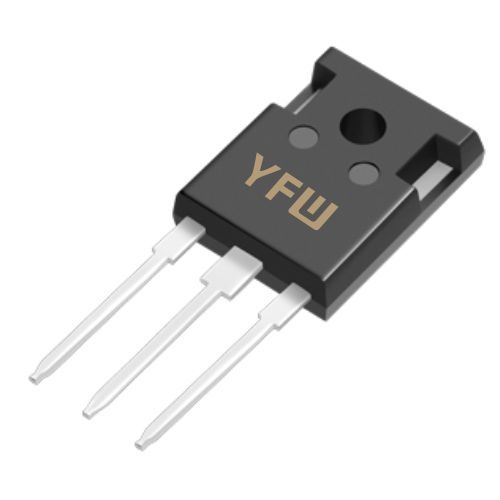A diode consists of a PN junction, formed by joining P-type and N-type semiconductor materials. P-type semiconductors contain an excess of positively charged "holes," while N-type materials have an abundance of negatively charged electrons . The interface between these two regions creates a depletion layer, where mobile charge carriers (electrons and holes) recombine, leaving behind immobile ions. This layer acts as a natural barrier, preventing current flow under equilibrium conditions .
The diode’s terminals are labeled anode (P-side) and cathode (N-side). The circuit symbol features an arrow pointing from the anode to the cathode, indicating the direction of conventional current flow when the diode is forward-biased .
Diodes exhibit distinct behaviors under different biasing conditions:
When the anode is connected to a positive voltage and the cathode to a negative voltage, the external electric field opposes the depletion layer’s built-in potential. This reduces the barrier width, allowing majority carriers (electrons from N-type and holes from P-type) to cross the junction and recombine. Once the applied voltage exceeds the threshold voltage (0.6–0.7 V for silicon diodes), current flows exponentially through the diode .
YFW’s SOD-123FL and SMA/SMB encapsulated diodes are optimized for low forward voltage drop, ensuring high efficiency in power conversion applications .
In reverse bias, the anode is connected to a negative voltage, and the cathode to a positive voltage. This strengthens the depletion layer, widening the barrier and blocking majority carrier flow. Only a tiny reverse saturation current (in microamperes) flows due to thermally generated minority carriers. However, if the reverse voltage exceeds the breakdown voltage, the diode enters a state of avalanche breakdown, where a sudden surge in current occurs. While this can damage standard diodes, specialized types like Zener diodes are designed to operate safely in this region for voltage regulation .
YFW’s Zener diodes (e.g., MM1W165 and MMSZ4709W) offer precise voltage regulation with tight tolerance, making them ideal for stabilizing power supplies in industrial and automotive systems .
YFW manufactures a wide range of diodes tailored to specific requirements:
These diodes convert alternating current (AC) to direct current (DC) in power supplies. YFW’s ultra-fast recovery diodes (e.g., SD103AWS) minimize switching losses, enhancing efficiency in high-frequency circuits like LED drivers and solar inverters .
Schottky diodes, such as YFW’s MBR3060PTS, feature a metal-semiconductor junction, resulting in a lower forward voltage drop (0.3–0.5 V) and faster switching speeds. They are widely used in automotive battery management systems (BMS) and DC-DC converters for their high efficiency .
YFW’s CRD series (available in SOD-123FL, SMA, and SMB packages) ensures stable current output despite voltage fluctuations. These diodes are critical in LED lighting and portable electronics, where constant current is essential for device longevity and performance .
Designed to protect circuits from voltage spikes, YFW’s TVS diodes (e.g., SMA6J11CA) clamp transient voltages to safe levels, safeguarding sensitive components in automotive ECUs and renewable energy systems .
The semiconductor industry is increasingly adopting silicon carbide (SiC) for high-power applications. SiC diodes offer superior thermal stability, lower switching losses, and higher voltage capabilities compared to silicon-based devices. YFW’s SiC diodes are poised to revolutionize electric vehicle (EV) charging infrastructure and renewable energy systems, aligning with global trends toward energy efficiency .
YFW combines cutting-edge technology with rigorous quality control to deliver diodes that meet international standards. Our products undergo stringent testing for reliability, ensuring optimal performance in harsh environments. Whether for consumer electronics or automotive applications, YFW’s diodes are engineered to excel in efficiency, durability, and precision .
Diodes are the backbone of modern electronics, enabling essential functions like rectification, voltage regulation, and circuit protection. Understanding their working principles is crucial for designing efficient and reliable electronic systems. As a trusted manufacturer, YFW continues to push the boundaries of diode technology, providing innovative solutions that empower industries worldwide.
For more information on YFW’s diode products and technical specifications, visit
www.yfwdiode.com.
Word count: 1000+
Key features:
Technical accuracy with simplified explanations.
Integration of YFW’s product lines and applications.
Compliance with industry standards and SEO-friendly structure.
Exclusion of Chinese content, ensuring global accessibility
